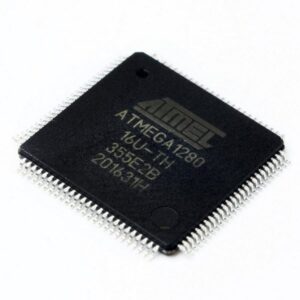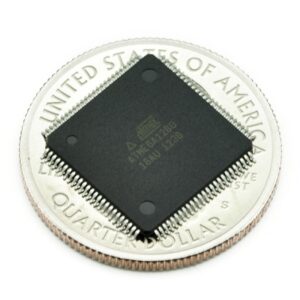 Recover Microprocessor ATMEGA1280PA Flash
Recover Microprocessor ATMEGA1280PA Flash
Recover Microprocessor ATMEGA1280PA Flash memory data file and copy the heximal program and data to new microcontroller atmega1280 flash memory and eeprom memory;
The Input Capture Register can capture the Timer/Counter value at a given external (edge triggered) event on either the Input Capture pin (ICPn) or on the Analog Comparator pins. The Input Capture unit includes a digital filtering unit (Noise Canceler) for reducing the chance of capturing noise spikes. The TOP value, or maximum Timer/Counter value, can in some modes of operation be defined by either the OCRnA Register, the ICRn Register, or by a set of fixed values.

Clone mcu ATMEGA1280 flash memory program and eeprom memory data in the format of heximal or binary after reading its mcu memory
When using OCRnA as TOP value in a PWM mode, the OCRnA Register can not be used for generating a PWM output. However, the TOP value will in this case be double buffered allowing the TOP value to be changed in run time to readout ic mcu atmega1280 flash memory and eeprom memory data. If a fixed TOP value is required, the ICRn Register can be used as an alternative, freeing the OCRnA to be used as PWM output.
The TCNTn, OCRnA/B/C, and ICRn are 16-bit registers that can be accessed by the AVR CPU via the 8-bit data bus. The 16-bit register must be byte accessed using two read or write operations. Each 16-bit timer has a single 8-bit register for temporary storing of the high byte of the 16-bit access.

Recover Microprocessor ATMEGA1280PA Flash memory data file and copy the heximal program and data to new microcontroller atmega1280 flash memory and eeprom memory
The same Temporary Register is shared between all 16-bit registers within each 16-bit timer. Accessing the low byte triggers the 16-bit read or write operation to decoding avr mcu atmega1280 flash memory, When the low byte of a 16-bit register is written by the CPU, the high byte stored in the Temporary Register, and the low byte written are both copied into the 16-bit register in the same clock cycle.
When the low byte of a 16-bit register is read by the CPU, the high byte of the 16-bit register is copied into the Temporary Register in the same clock cycle as the low byte is read.